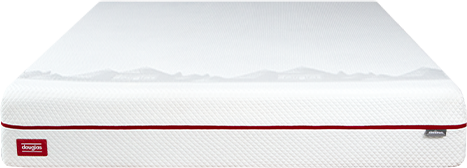How to Clean a Mattress: 7 Tips to Try This Weekend (2025)
Updated: June 16, 2025 | Published: June 12, 2024Like anything else in our homes, mattresses get dirty. You probably already know to wash your sheets regularly—but how often do you think about cleaning the mattress itself?
Mattresses collect dead skin, hair, sweat, stains, dust, mites, and other unpleasant things that can settle deep into their materials. Dirt and debris inevitably get through sheets and coverings, even if you routinely change bedsheets and mattress pads.
So no matter how careful you are, you still need to know how to deep clean a mattress. Let’s get started.
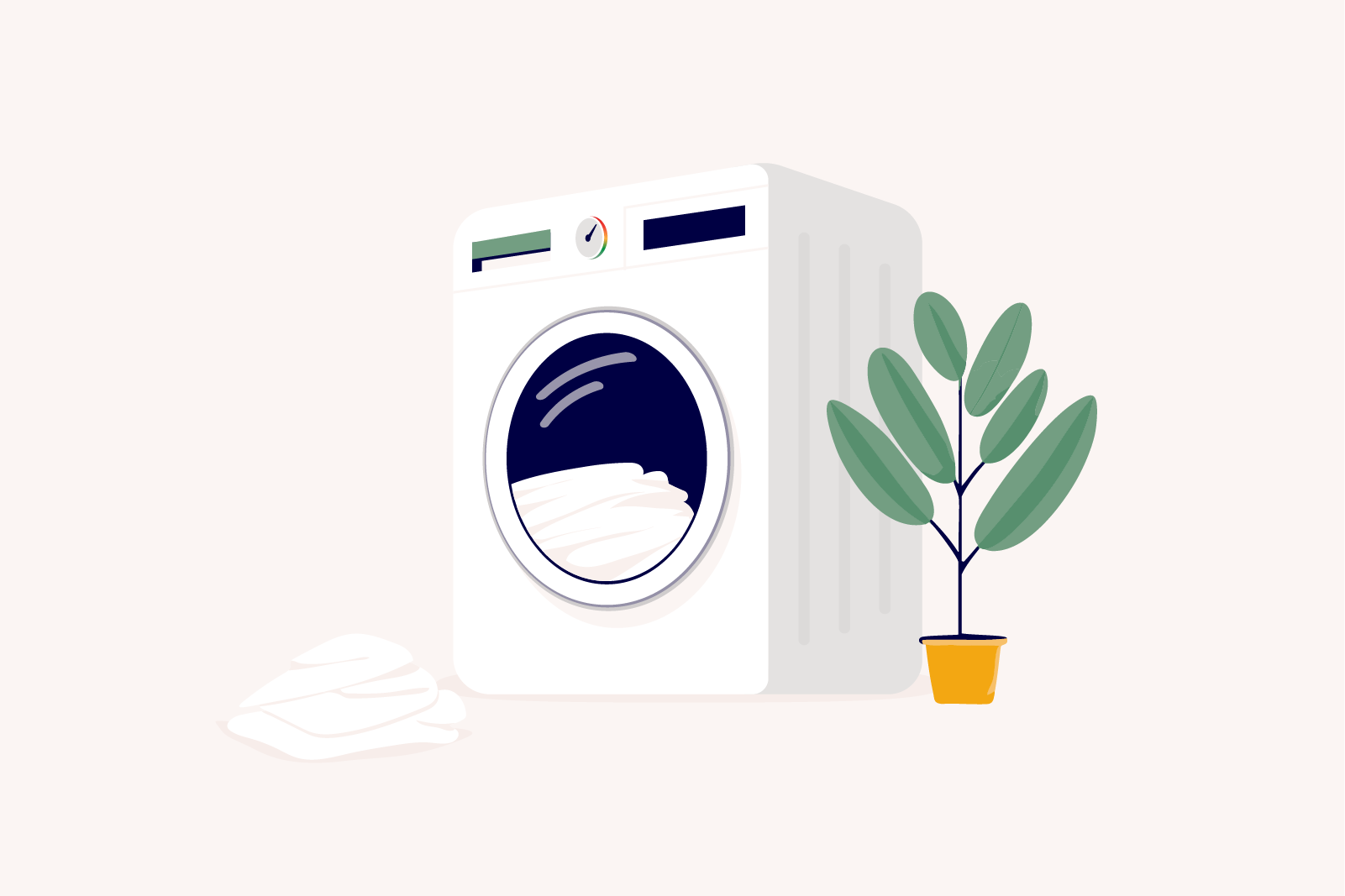
1. Wash the Bedding
It’s important to wash your bedsheets regularly, but not everyone does. Whether you use cotton or bamboo sheets, washing your sheets once a week is the first and best thing you can do to keep your mattress clean. Many foam mattresses like Douglas and Octave also come with removable, machine-washable top covers that you can clean as needed.
To get in the habit, start washing your sheets as soon as you wake up on the weekend. That way they’ll be clean and dry for bedtime. After you throw your bedding in the washing machine, add your favourite laundry detergent and follow the instructions on the sheet’s laundry tag.
Different types of sheets will have different washing requirements. For example, bamboo sheets need cooler washing and drying temperatures than cotton, and they don’t like being washed with other types of fabrics. Most sheets can also be dried safely on high heat, but not all.
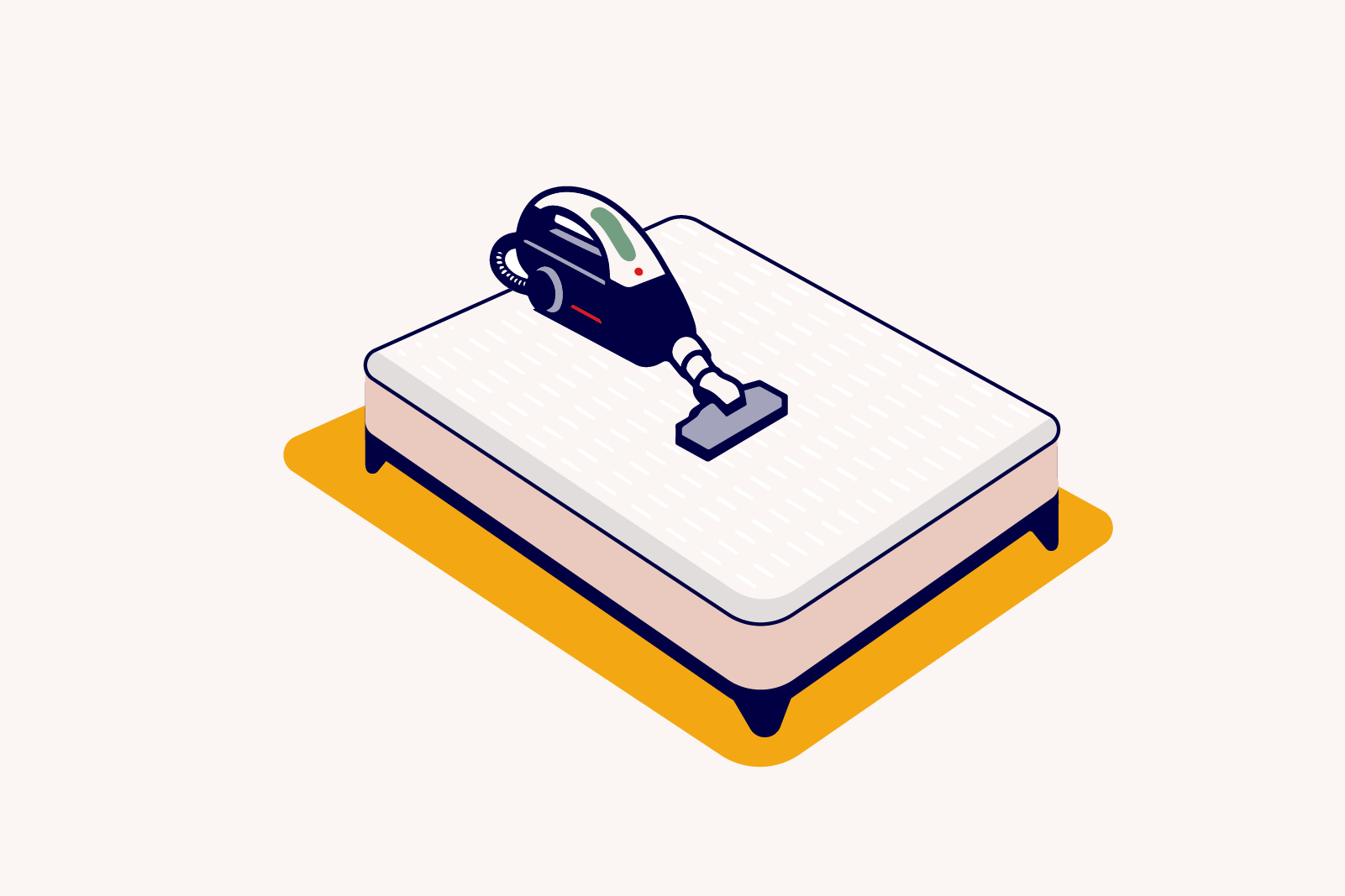
2. Vacuum Your Mattress
With your sheets in the wash, let’s shift our focus to the mattress itself. Vacuuming your mattress once a month is a simple yet effective way to get rid of dirt, dust, and allergens.
Using the upholstery attachment on your vacuum, gently move over the entire mattress surface. Pay extra attention to seams, edges, and tufting, as debris tends to gather in these crevices.
Even if it doesn’t seem to help at first, vacuuming can also help break up older, tougher stains before you try other methods to clean them. This makes those stains easier to remove.
Remember to vacuum once more after applying baking soda (a step we’ll explore in detail below). This last round of vacuuming picks up any remaining residue, leaving your mattress feeling refreshed.
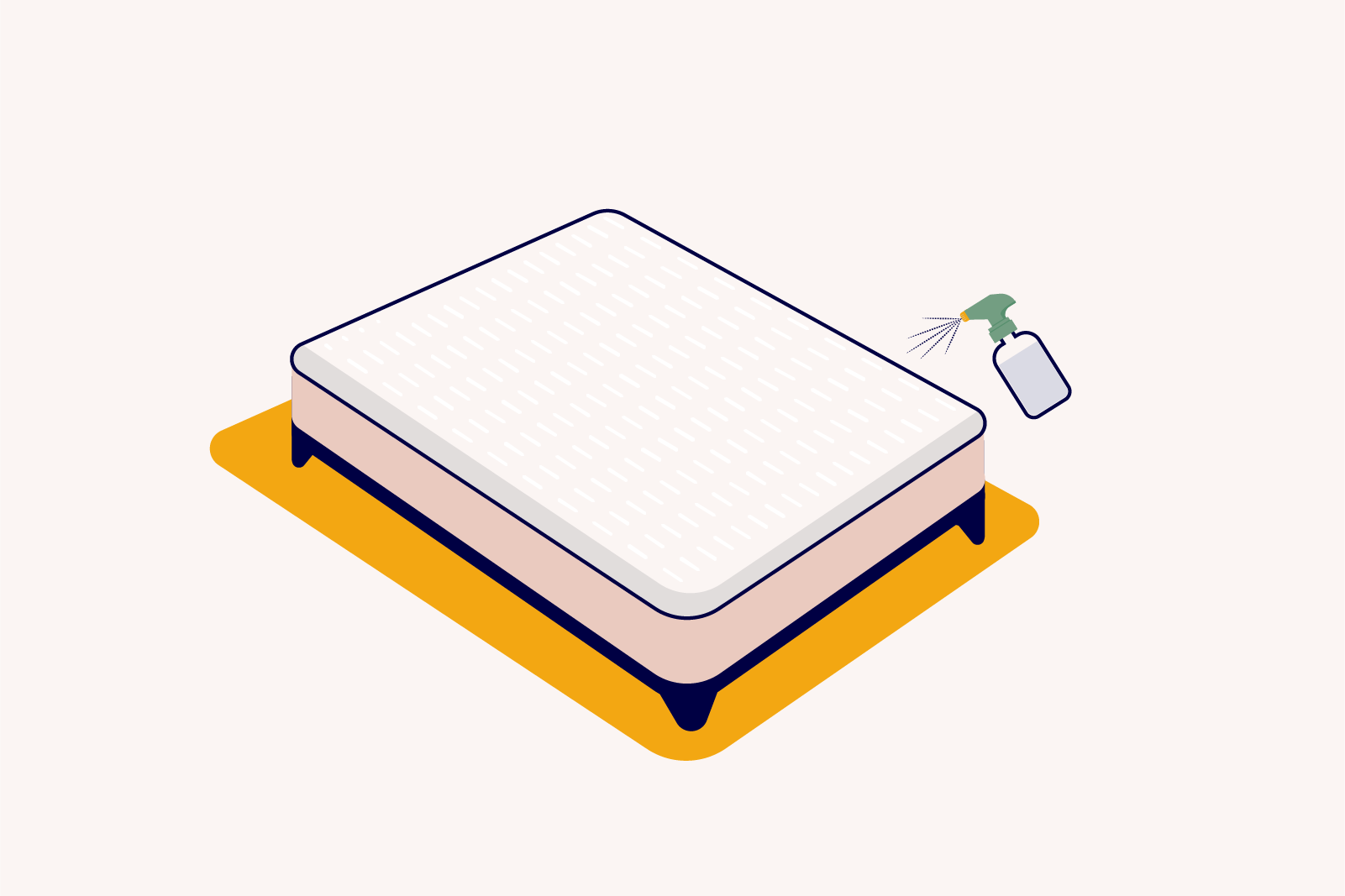
3. Spot-Clean Surface Stains
Cleaning stains on your mattress is often a matter of timing. Spot-cleaning your mattress as soon as it’s stained helps prevent the stain from setting into the material. You can treat older stains later, but there may be some residue or discolouration left behind.
So how do you clean a bed? Many mattresses can be safely spot-cleaned with something as simple as dish soap and water, but not all. Only use as much water as you need, and use the appropriate cleaning solution. An enzyme-based mattress cleaner spray, like Resolve or Bissell, is often best because it removes stains without damaging your mattress. Always consult your mattress’s manufacturer on which cleaning solutions are safe to use.
Take your mattress type into consideration, too. For example, memory foam mattresses should never get water on them, period. Memory foam is highly absorbent, and moisture can turn it into a breeding ground for mold. This is also a risk for mattresses that contain coils, since the metal can rust or get damaged by water exposure.
A mattress protector (which we’ll talk more about later) makes spot-cleaning much easier. The protector acts as an additional barrier against spills, ensuring your mattress remains in good condition for a long time.
4. Deep-Clean Spills & Accidents
For bigger stains, or stains that have already set into your mattress, a gentle approach is key. Use an enzyme cleaner to blot the mess, or lightly spray a mix of dish soap and water if your mattress type allows it.
Another effective solution is a combination of cold water and hydrogen peroxide (that one’s also good for killing dust mites). Spray the stain, and let it sit for 10–15 minutes. More difficult stains might need to be sprayed more than once. Just be aware that hydrogen peroxide can discolour dark mattresses, or appear to bleach them.
White vinegar or hydrogen peroxide are great for cleaning up children’s accidents, as well as odours. Spray undiluted white vinegar or peroxide on the stained area, let it sit for 5–10 minutes, and blot dry to remove excess moisture.
For more stubborn stains, try this home remedy to make your own mattress stain remover:
- Mix 1.5 cups of hydrogen peroxide, 3–4 tablespoons of baking soda, and a few drops of liquid dish soap in a spray bottle.
- Apply the solution to the mattress surface and focus on stained areas.
- After 10–15 minutes, blot the most saturated areas and let the mattress dry thoroughly.
Make sure the mattress is completely dry before replacing the sheets. If a smell remains after using either of these methods, read our next tip and learn how to clean a mattress with baking soda.
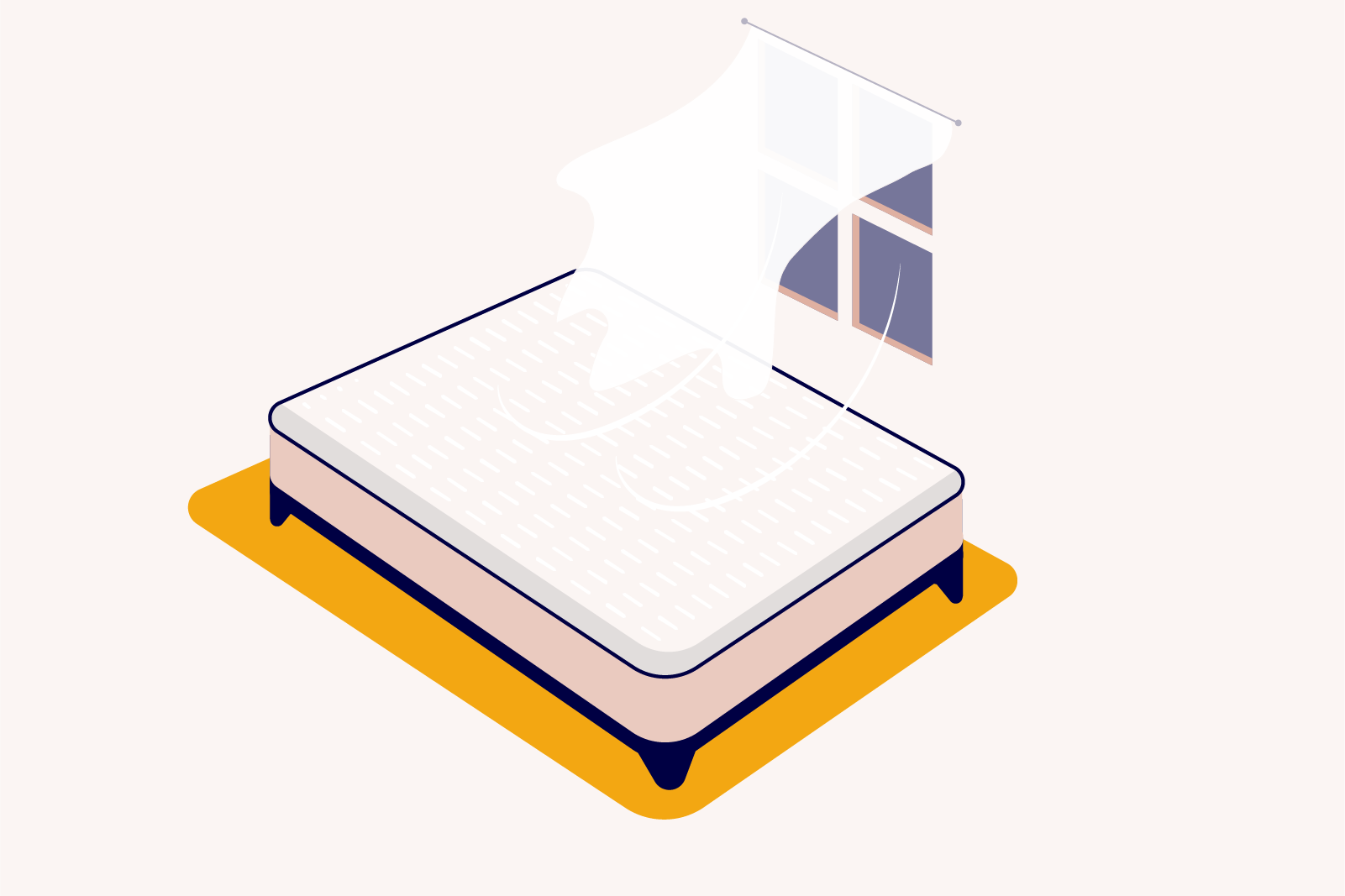
5. Freshen & Deodorize Your Mattress
Once your mattress is completely dry from any liquid stain and odour treatments, it’s time to grab the baking soda from your pantry. Here’s how to deodorize a mattress:
- Sprinkle baking soda all over the mattress surface. Don’t be afraid to use an entire 500-gram box if you need to.
- Let the baking soda sit undisturbed for 12–24 hours. (That’s right, cleaning a mattress with baking soda takes a little patience!)
- Vacuum again with your upholstery attachment to remove all of the baking soda from the mattress’s surface.
Fresh air and sunlight are good for your mattress, too. If it’s not too heavy (and the weather allows), take your mattress outside and let it sit in the sun for about six hours. Sun exposure helps break down persistent stains, making them much easier to clean.
However, avoid airing out your mattress at night. The change in temperature can increase humidity and damage your mattress instead of freshening it up.
6. Rotate Your Mattress
It’s a good idea to rotate your mattress every 3–6 months. This reduces the risk of stains appearing in the same places, and means you’re less likely to clean repeated stains.
Rotating your mattress will also help it last longer. Your hips and shoulders apply the most pressure to the mattress as you sleep, increasing the wear and tear on those parts of the mattress. Rotation can help prevent lumps and divots from forming as your mattress ages.
READ MORE: How long should a mattress last?
However, unlike couch cushions, it’s not a good idea to flip your mattress. Many modern mattresses are designed with layers in a certain order, and they won’t be nearly as comfortable upside down.
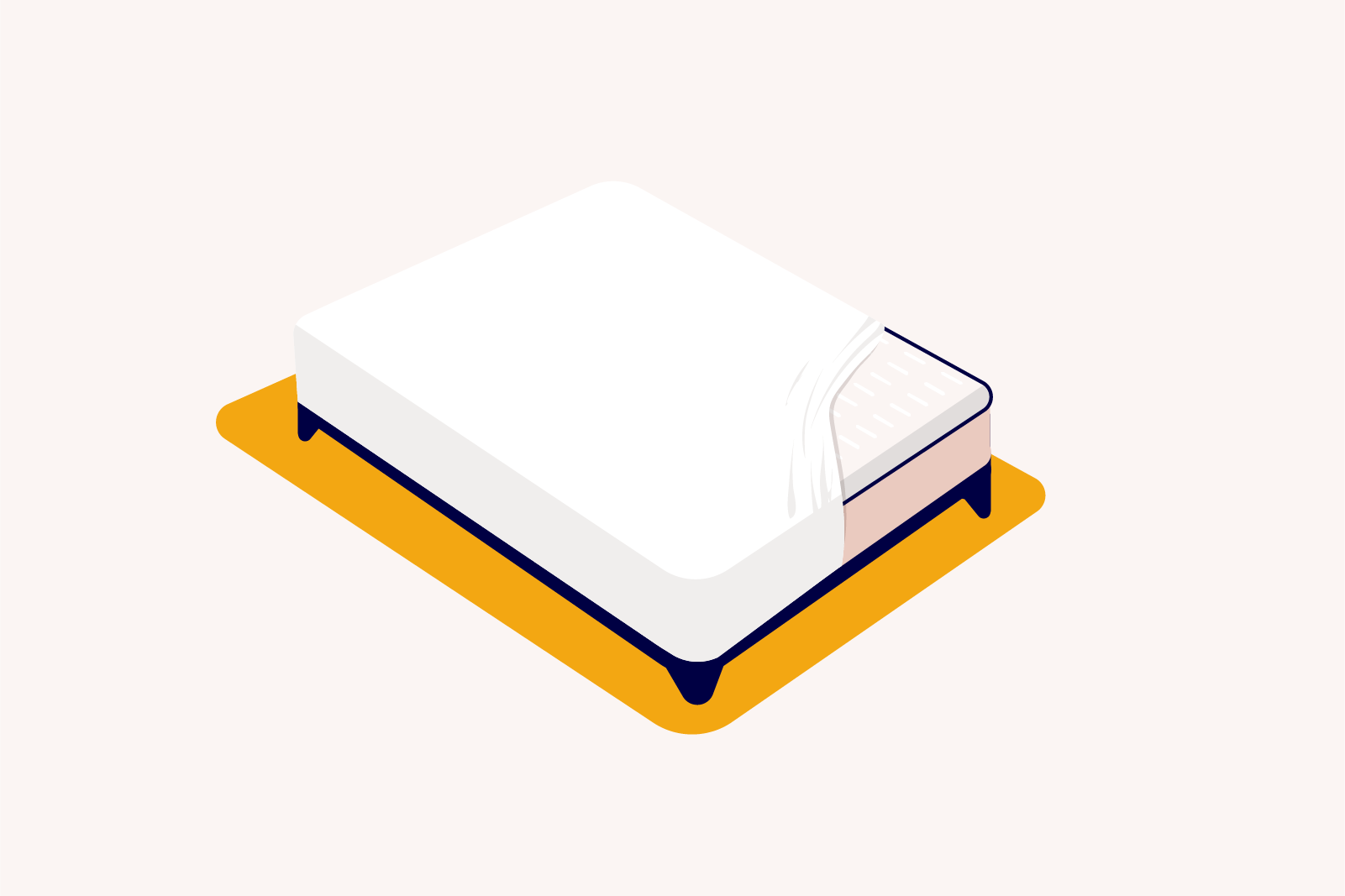
7. Use a Mattress Protector
One of the best, most cost-effective ways to keep your mattress clean over the long run is to use a mattress protector. This will either sit directly on top of your mattress, zip around the entire mattress, or wrap around the top and sides like a fitted sheet.
READ MORE: How to wash a mattress protector
Mattress Pads
These padded layers usually go on top of the mattress to prevent stains, but they often don’t extend to the sides. Many are also much more absorbent than they are waterproof, because they’re meant more to add cushion and comfort. If you want to buy a mattress pad to protect against stains, check to make sure that’s what it’s designed for.
Zip-Around Covers
Worried about keeping your mattress free from bed bugs or allergens? This kind of mattress protector will do the job nicely. It wraps around the entire mattress and usually has a zipper midway down the side. The downside is that removing the cover to clean it and putting it back on the mattress can be a hassle, especially if you have a larger mattress.
READ MORE: Get our guide to mattress sizes in Canada
Fitted Covers
These covers look like fitted sheets, and fit snugly on your mattress in exactly the same way. They can be less of a hassle than zip-around covers, and many are machine washable. Once your fitted and top sheets are in place, they’re invisible.
Get a free mattress protector, bedsheets, pillow(s), and pillow protector(s) with the purchase of Douglas Original.
How Often to Clean a Mattress
Clean your mattress every six months or so. Mattresses don’t need to be cleaned as often as mattress protectors or bedsheets, but they should still be cleaned fairly regularly. Plan to clean your mattress at the same time you do other seasonal chores, like changing your furnace filter or cleaning your gutters.
Cleaning your mattress twice a year isn’t just hygienic. Taking steps to clean your mattress every six months can also help you extend the life of its layers and fabric, help prevent pest infestations, and keep your sleeping area feeling fresh and clean.
Keeping your mattress clean doesn’t need to be hard. Just remember to wash your sheets and vacuum the mattress regularly, treat stains and spills right away, freshen up the mattress when it starts to smell, and rotate the mattress to even out wear and tear. And make sure to get a mattress protector to keep your mattress in great shape for longer.
Our goal is to provide the information you need to find the mattress that’s right for you. Get started with some of our most popular mattress shopping resources:
- Best Mattress Guides: Best Mattress Canada, Best Mattress In a Box
- Reviews: Douglas Original, Logan & Cove Choice, Juno, Octave Vista
- Comparisons: Douglas vs Endy, Douglas vs Casper
We use independent, third-party engineering firms (commissioned by us) with the APEGA stamp of approval to conduct mattress testing on our behalf, using publicly available data. We review and test all mattresses on 40+ criteria we think are important to you, including price, country of manufacture, sleep trial, warranty, features, materials used, motion isolation and edge support ratings, customer satisfaction reviews, returns, and refunds.



